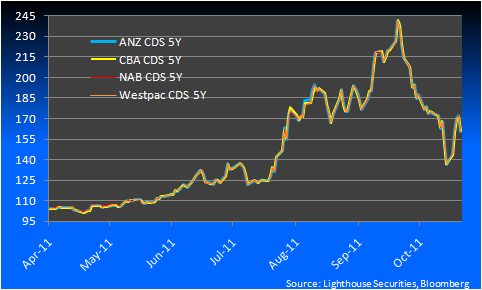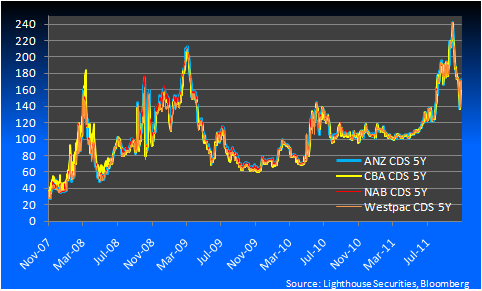Speaking to the ABC this morning, Treasurer Wayne Swan maintained his commitment to a 2012/13 budget surplus despite the growing realisation that revenue is going to fall well short, as forecast here weeks ago:
WAYNE SWAN: Well it’s a forecast from Access Economics. I can’t say that it’s accurate.
What we are going to do is go through the normal process that we do as we prepare what is known in the jargon as our MYEFO which we publish towards the end of the year.
But what I can say and I have been saying now for months is that there will be an impact on our growth.
We can see that in the forecast put forward by the Reserve Bank on Friday. The Reserve Bank’s forecasts are somewhat different to Access Economics but they both point to slowing growth in 11/12 in the Australian economy. That does flow through to revenues.
But we’ll have to go through our normal processes in the MYEFO process, put all that together and then we’ll publish it.
SABRA LANE: Are you still going to stick to that promise?
WAYNE SWAN: Well we are certainly determined to bring our budget back to surplus in 2012/13. We think having a very clear and consistent fiscal policy is important.
When you have your budget hit by revenue write-downs such as I think we are seeing at the moment, that does have an impact and that means that tough decisions will have to be made in the context of the budget.
SABRA LANE: Those tough decisions, will you look to cut Government spending further or will you look at tax increases? Are they the sorts of things, options you are examining now?
WAYNE SWAN: Well because of the write-down of revenues we will certainly be looking for savings elsewhere in the budget.
In past budgets we have found over $100 billion worth of savings. We’d go through that process again. It’s something that we do every year in the lead-up to our updates and in the lead-up to the budget. We’ll be doing that again.
But we are very determined to have a very clear, effective fiscal policy. That very clear and consistent and strict fiscal policy has made room for the Reserve Bank to lower interest rates in recent weeks. That’s been very important and it’s important as we go forward.
Yes, it’s important and Swan has just confirmed that more rate cuts are coming. If the government is going to persist in its drive to surplus then the easing is going to have to come from monetary policy.
There’ll no doubt be lot’s a screaming about this today and tomorrow as some manifestation of a “surplus obsession” but Swan is right. Here are the two charts that tell you why. Recent bank CDS prices:

And over the longer term:

This is the price that investors have to pay to insure the bonds they buy from Australia’s major banks. As you can see, the price has been wildly volatile lately and has tracked well above GFC levels following European woes, no doubt because our banks owe them some $300 billion with an associated high rollover risk. As John Laker, Chairman of APRA, said in that body’s annual report today:
The deteriorating environment also poses two particular challenges for the ADI industry. The first is the danger of a widespread dislocation in global funding markets, in a rerun of October 2008. Risk aversion has intensified in bank funding markets in the euro area, where credit spreads have widened considerably, and it appeared to be broadening. The larger ADIs in Australia that tap global funding markets have very little direct exposure to the European banks and sovereigns under pressure but they would not be immune if, as in October 2008, risk aversion tarred all internationally active banks whatever their underlying quality.
Unlike the powers that be, I think that banks are responsible for both halves of their balance sheets – assets and liabilities – so to me their “underlying quality” is questionable. However, I do agree with Mr Laker that if the closure of global wholesale debt markets to Australian banks continues then we have a very big problem for which the only real solution is a return of the government guarantee. For that guarantee to be effective, there can be no suggestion that the national credit rating is at risk, therefore you can’t be stuffing around with surplus forecasts the moment you get a bit of volatility in your commodity exports.
Given the European recession has barely begun, I expect all of these pressures to intensify. Ultimately, in fact, I do expect the government to abandon its push for surplus next year, however, not until the European recession more clearly takes down Chinese and US growth, at which point, as the RBA put it last week in the SoMP:
…the economy would still be affected through falls in asset prices and weaker household and business confidence. Commodity markets could be expected to weaken and growth in domestic incomes would be lower. While there is a large pipeline of committed LNG projects that would be expected to continue, some planned expansions to coal and iron ore capacity could, in a downside scenario, be delayed.
In other words a rerun of 2008 with a mining led blow to growth (and possible recession). In such a scenario, fiscal easing in the form of automatic stabilisers and some modest stimulus will make counter-cyclical sense.

